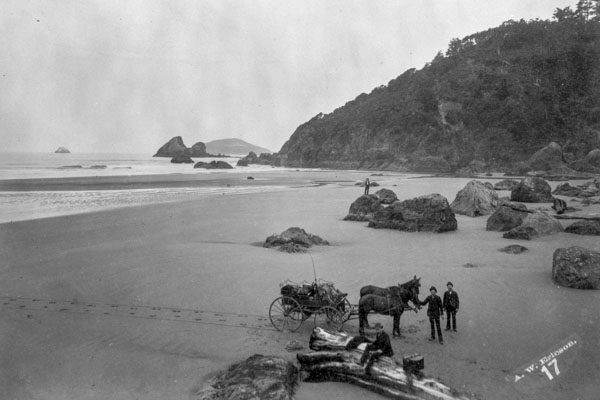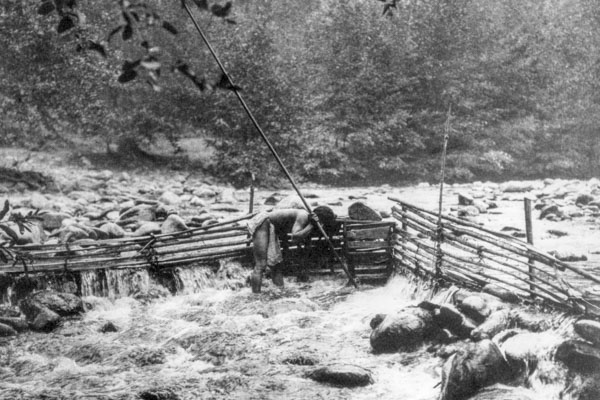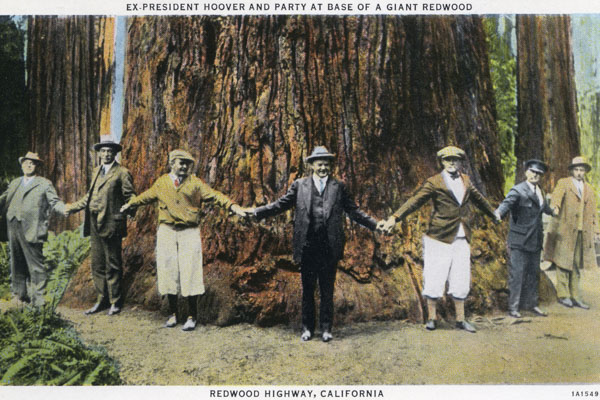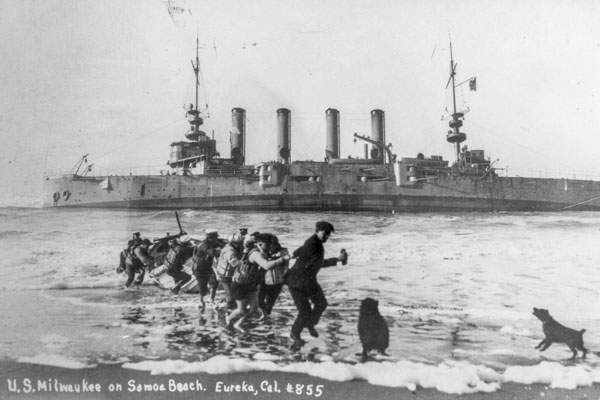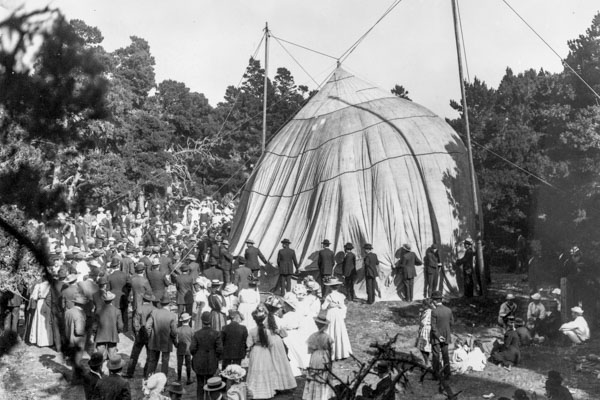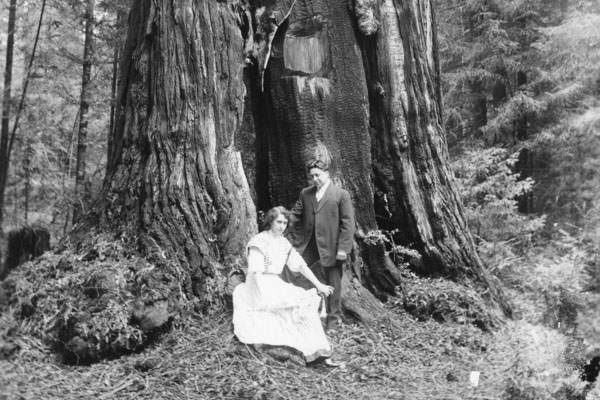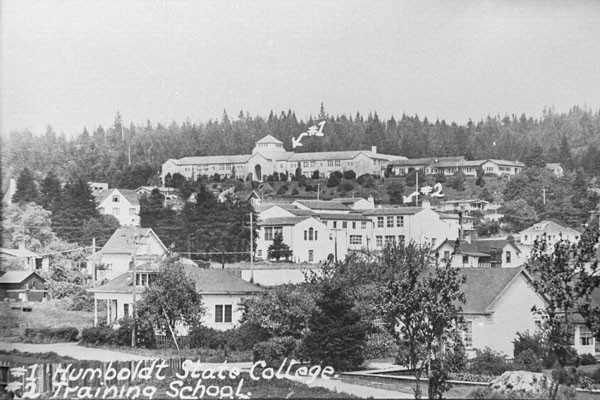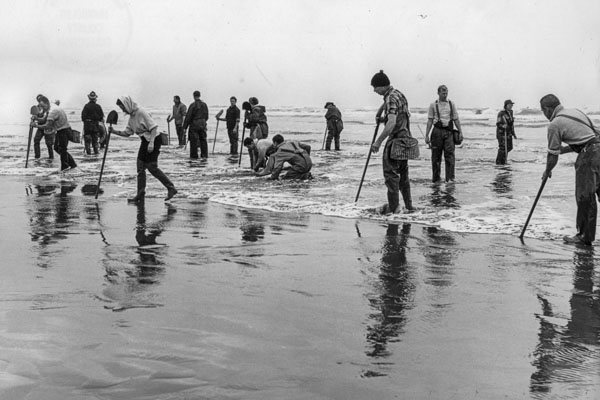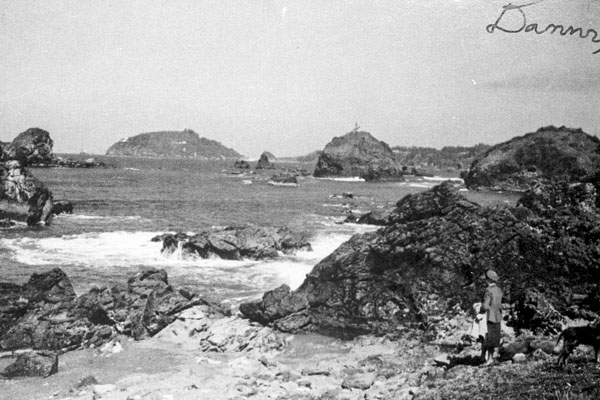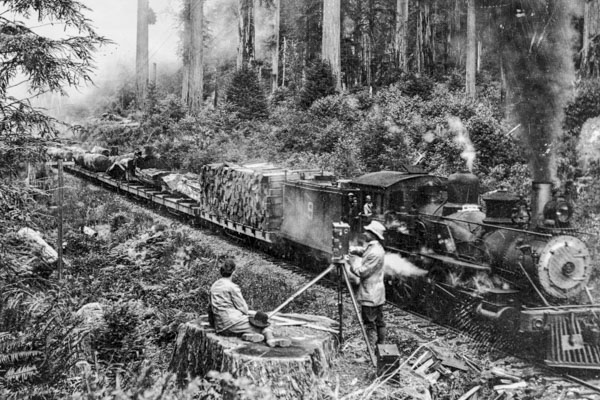You are here
When Humboldt Had The Double Standard
Fight for Survival
Varied Viewpoints
None Remain
by Maclyn H. McClary
McClary, Maclyn H. 1972. "When Humboldt Had the Double Standard." Pacifica May:11-14. Check out MF170 for scattered issues of 27 newspapers from 1886-1905, "Microfilmed through the courtesy of Nancy Prater Barnes in memory of her father Barney Prater, 1901-1962. He lived in Humboldt County 1923, 1945-1962."
Humboldt County had a Double Standard as early as 1896. To that end, it wouldn't take an Oracle to say this Northern California county had a lot of Nerve, which it did.
However, the Double Standard was not (as far as this article is researched) a description of the state of the people's morals about 1896. Rather it was a newspaper published daily in Eureka in those days. Too, the county had both Nerve and an Oracle as well as other newspapers such as The Tea Plant, the Rescue, the Mechanic and The Progress that flourished-many briefly-from about 1886 to 1905.
With the current interest in nostalgia, old newspapers soon may be coming into the limelight. Old movies and old radio shows have already enjoyed a revival. Thus looking at these old Humboldt newspapers, then, is like a trip into the past, too.
Ads in the Double Standard offered parlor organs for $60 and up. Mr. E.G. Pluke will paint your house while you wait. But the Double Standard evidently had little use for the editorial policies of the competing Humboldt Times. On October 16, 1896, it reprinted a Times' editorial criticizing a free silver speech made by William Jennings Bryan, the Boy Orator of the Platte. The Double Standard said, "The Times' comment is silly enough to have been written by its tariff editor, but it probably came from the pen of its equally shallow kindergarten economist," It then defended Bryan's position.
Much of the Double Standard's news was brought by the still young telegraph. And if you wanted to study telegraphy, the Eureka Academy and Business College said in its quarterly publication, The Academy Record, for September, 1888, that the course would cost you $40. The Record of the school, which had a faculty of eight, contained reports on its classes and was "devoted to the cause of Higher Education in Humboldt County."
Dedicated in 1888 to "the industrial interests in Humboldt County" was The Humboldt Mechanic. It contained many mentions of Janssen's hardware store. The Mechanic's business manager was Julius Janssen.
Devoted to the "Interests of Temperance" was The Humboldt Rescue. It warned in 1884 that newer mixed drinks might be more harmful than the already infamous "genuine alcoholic beverages." Poetry urged boys to grow up to become "Temperance Men." But the Rescue also took time to criticize the condition of Eureka's sidewalks and to report this "Drama in Real Life" taken from the Detroit Free Press:
"Act 1st. Young farmer from West Virginia in Federal Army taken prisoner and sent to Andersonville. Wife hears afterwards that he is dead. Her house burned down. She goes with young child to uncle. Uncle moved away. Boy sent to orphan asylum, she supports herself by hard work."
"Act 2nd. Boy adopted and educated by a wealthy couple and raised in luxury. Benefactors lose their fortune. Boy thrown upon the world and drifts west.
"Act 3rd. Husband not dead. On release from Andersonville goes home but fails to find it or family. Goes to Nevada, strikes a rich claim, makes a fortune and becomes a banker in San Francisco.
"Act 4th. Young man applies for a situation in a bank. Looks like proprietor. Questions asked. No (sic) strawberry mark on his left arm. 'Then you are my long lost son." Made a partner in bank. Don't know where his mother is. Old soldier friend of father enters to get check cashed. Recognized. Knows where wife is. 'Where?' 'In Covington, KY.' Telegram. Answer from wife.
"Act 5th. Banker and son in Covington. Joyous meeting. Wife struggles hard for living many years. All sunshine henceforth. Luxurious home. Not a wish ungratified. Tableau. Curtain falls to gay music."
Like The Rescue, the Eureka Progress, a weekly, was, in 1898, stressing the temperance movement and church news. It reported "A Disgraceful Affair" that occurred at a local church's evening service when "a lot of hoodlums" disturbed the worshippers and one of the invaders was ejected. More's the pity, "they were young men of whom the public expects better things; who have good homes..."
Another newspaper with a religious thrust was the Redwood Christian Weekly of Eureka about 1901-2. Devoted to "Christ and His Church in Humboldt County," it carried regular news and ads as well as articles on religious topics. It was apparently published by the Seventh Street Church of Christ.
One of the more imaginative early newspapers was Nerve, published in Eureka from 1892 until at least 1895. In an early issue, it proclaimed in a slogan just under its page one nameplate that "The Bee's Sting is Nature's Reward to Drones and Interlopers." By 1893, the slogan suggested "Lighten the Responsibilities of Government by the Wise Extension of the Franchise," a plea that would warm the hearts of women's libbers today. By 1895, Nerve described itself as "The Vehicle for Original Ideas and Other Strange Things." Much of that issue's first page was devoted to the merits of a bill to provide for a Central American Canal.
In Southern Humboldt was the Alton Home Journal, which proclaimed near the top of page one, "Be it ever so humble there is no place like home." Another page one slogan called for "Progress, Patriotism, Prosperity." In its edition of March 12, 1892, for example, the Home Journal carried considerable fiction and poetry on page one, while inside pages were devoted to news notes and ads. One dry good store promised to pay customers round trip fares to Eureka. Another merchant announced, "I am Wright the Jeweler."
Perhaps the most unusual of the historic newspapers was The Tea Plant published in Eureka. In 1884, the masthead listed E.V. Thorn as "Fighting Editor" and Nelson Brackett as "Slogger." The newspaper said it was "published semi-occasionally and sometimes oftener." It was "free, gratis, for nothing," and the advertising rate was "all we can get." About six months later, the publication had apparently gained status and respectability. Thorn became "Literary Editor and Proprietor," Brackett was now "Silver Pill Agent and Slogger," and four others had been added to the staff with such titles as "coffee roaster and oiler." Subscriptions were then priced at $1.00 each and ads were $10 a column.
There are several other newspapers of the time, including the Ferndale Valley Oracle which served "the farmer, the orchardist, and the fireside" in 1893, preserved (some of them with only a few issues) in the Cal Poly Humboldt Library's microfilm collection. They were micro-copied through the courtesy of Nancy Prater Barnes in memory of her father Barney Prater. Perhaps some old timers remember reading these newspapers in the original. Their reminiscences would be interesting.
Browse Articles | NCN Homepage | NCN Sitemap
The Northwest California Newspapers Website is managed by Special Collections located in the Cal Poly Humboldt Library.
